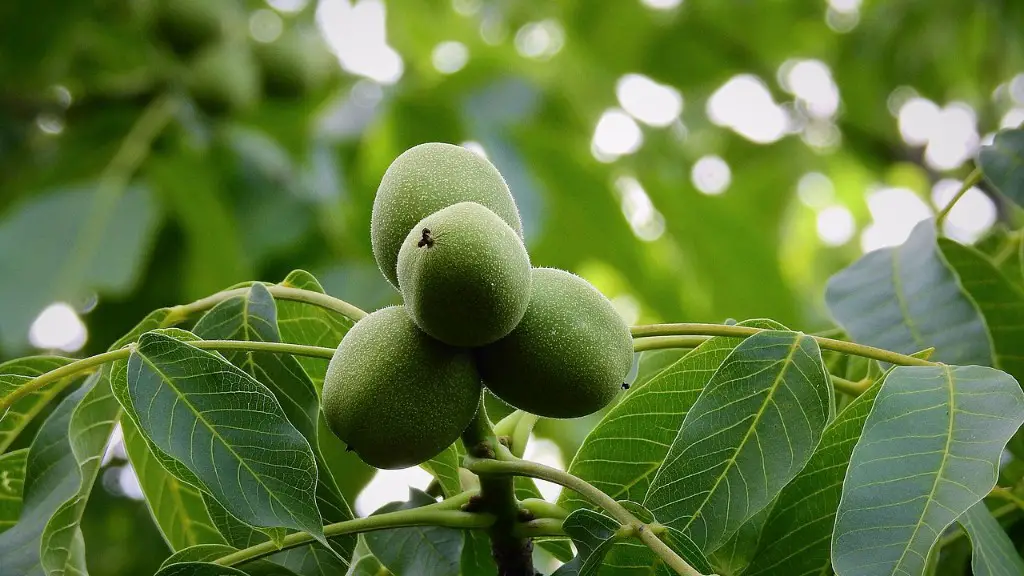When a lemon tree bears fruit, it generally produces large yellow lemons which, once harvested, can be put to use in many different ways. Not only are lemons a great source of vitamin C, they have also gained a reputation for being incredibly versatile when it comes to cooking and baking, to say nothing of their power to clean and freshen up areas in and around the home. As with any crop, the key to successful lemon fruit production lies in careful tending and an understanding of the necessary requirements for a producing, fruitful tree.
Growing lemon trees requires that the trees be planted in well-draining soil, with a position of full sun preferable to get the best results. Regular watering, and in particular during periods of flowering and fruiting, is key to the health of the tree and successful fruit bearing. Trees should be fertilized periodically, using a fertilizer rich in nitrogen, potassium and phosphorus; this helps to ensure that the tree is replenished and supported in the essential elements it needs to bear healthy, potent fruit.
Lemon trees typically take time to deliver and more often than not, it will take at least a year before any fruits are produced. Harvesting can occur multiple times during a season, as a tree will continue to produce fruit for much of the year, but eventually the remaining lemons will fall off once the tree practices its natural defences against over fruiting. To help ensure the health of the tree, it is best to balance the level of fruit taken from the tree, such that it will always be in a position to produce successors.
Certain illnesses or pests can threaten the output of any crop, and lemons are no different. In particular, citrus blackfly, citrus gall wasp and greenfly can cause extensive prior to or post-harvest. It is important to check for and try to control the spread of such pests, so the root cause is removed and the tree is not adversely affected over time.
Caring for a lemon tree that is bearing fruit should include removing spent blooms, controlling the spread of pests, watering, fertilizing and pruning to avoid budding and additional fruit production on a small tree. Taking these steps, and providing a good deal of patience and love, should ensure that the lemon tree produces a bountiful crop that is sure to bring an abundance of lemons.
Types of Lemon Trees
When it comes to the different types of lemon trees available, the decision is largely based on the climate and environment a particular tree will grow best in. Citrus trees generally grow best in warmer climates, and are often replaced in cooler climates by hybrids, such as the Meyer lemon tree, which can bear fruit at a cooler temperature. This can help to ameliorate the effects of climate change on the tree’s ability to bare fruit.
The traditional lemon tree will typically require between 400 and 600 chill hours; each hour falling below 45°F (7°C) being counted as a chill hour. This means that lemon trees grow best in climates with pleasant winters, rather than in regions with cold winters. Knowing the chill requirement before planting a tree is essential in ensuring the tree produces fruit.
When to Pick Lemons
When it comes to harvesting lemons, it is important to pay close attention to the external signs of ripeness. Lemons are usually ready to be picked when they look full and firm, and also when they develop a yellow hue and change in texture. Usually, the fully-ripe fruit will pull away from the tree easily when grasped gently, indicating that it is ready for harvest. The best time for harvesting lemons for culinary use is when the fruit is still firm, as the level of acidity can dissipate over time.
Lemons can remain on the tree for a prolonged period, providing the tree is healthy and is not dealing with any detrimental pests. This can be useful for if the intended use for the lemons is for decorative purposes, or to create a season-long supply of lemons of different ages.
Storing Lemons
Once harvested, the lemons must be stored correctly to ensure they remain crisp and usable for as long as possible. The ideal storage environment means lemons are kept in a cool and dry area; this could be either a refrigerator, or a bowl on a kitchen shelf. Citrus fruits ripen slowly, and lemon can last up to four weeks if stored in this manner. The lemons should never be put in a bowl with other types of fruit, as the ethylene gases released by ripening fruits can lead to premature decay.
Storing freshly picked lemons in the refrigerator with some paper towelling can help to preserve their freshness and potency. Lemons can also be peeled, diced and frozen for later use, meaning you can always have useful citrus fruits at hand, ready for adding a little zing to a dish.
Preserving Lemons
Preserving lemons is a process by which the the lemon is cured to the point of becoming almost jam-like. It is a process that is thought to have originated in North Africa over three centuries ago, and is used to preserve the lemon and make it last much longer than if it were simply left on the tree. Curing the lemons changes their state from acidic and potent to sweet and fragrant, and actually enhances their nutrients.
The traditional method for preserving lemons requires that the selected lemons are washed, halved and placed in a sterilized container with a brine of sea salt and water. Each layer of lemon requires that a liberal layer of salt is sprinkled between them, and the top of the container should be covered with a cloth. The lemons should rest in the solution for roughly three weeks in a cool, airy place outside of direct sunlight. Once the time is up, each lemon should have almost tripled in size and they should be stored in a sealed, sterilized glass jar with the brine and placed in the refrigerator.
When the time comes to use the preserved lemons, they should be rinsed off before adding to dishes or any other desired food preparation. The congealed lemon segments can be used either in their entirety or cut into smaller pieces, and their sweet, intensified flavour is sure to bring a range of new zesty notes to any meal.
Health Benefits of Lemons
The numerous health benefits of lemons are widely documented and recognized, making them a popular and sought-after ingredient for many wellness-conscious individuals and cooks alike. Being an excellent source of Vitamin C, lemons can help to keep your skin healthy and hydrated, as well as bolster your immune system by reducing inflammation and helping to build antioxidant defenses within the body. Furthermore, lemons contain an impressive array of minerals and vitamins, from iron and magnesium to potassium and calcium.
Lemons can also help to balance your pH and are known for their ability to support the ant-bacterial, anti-fungal and anti-venomous strengths of the body. They also boast powerful cleansing properties, which can help to flush out toxins, reduce acidity and improve digestion and gut health. Furthermore, they are also credited with being helpful in weight-loss and have been attributed to reducing high blood sugar levels, while their vitamin C content can help with wound and burn healing, and their flavonoids can help to tackle respiratory issues and fever.
Lemons are a wonderfully versatile ingredient that is widely available and affordable, so need not break the bank if you’re looking to re-stock your kitchen. There are a number of health benefits to including lemons in your diet, and with a bit of know-how, you can use and enjoy this delicious, potent fruit whenever you choose.
Lemon Tree Care
Caring for a lemon tree can involve a range of factors from creating the optimum conditions in which the tree can thrive, to controlling pests and providing general maintenance and help to bearing fruit. Pruning is an important part of caring for a lemon tree, as it ensures that the tree remains healthy and the top-growth is controlled, which helps to ensure it has the right shape and tidy form.
It is typically advised that pruning take place three to four times in a period of three to four month and, because lemons are evergreen, it can be done all year round. When pruning, avoid cutting back to a single trunk and instead make sure to retain multiple main branches, with some of them at least a foot away from the trunk, angled outwards to let in more air and light. This helps the tree to handle the growth that comes with producing fruit.
The general rule for pruning is to remove anything that struggles to reach maturity due to overcrowding, or anything that looks distorted or less healthy in comparison to the rest of the tree. It is also important to bear in mind that any pruning should happen up to at least two months before the tree is expected to flower, to allow enough time for the damaged areas to heal and avert the risk of pests and disease.
Lemon trees need to be regularly watered, and when growing in a pot, careful monitoring is important. If a tree is kept in a pot, it is worth each March pouring plenty of compost onto the soil, as this will help to replenish it and offer essential nutrients that the tree needs to bear mature, healthy fruit. Ensuring plenty of compost is added to the soil can also help to improve drainage.
Protecting Against Frost
If you live in an area where frost is likely, extra care must be taken to make sure that it does not damage the lemon tree. Certainly if temperatures are expected to drop to freezing – or close to it – the lemon tree will need to be moved indoors to a sheltered area away from direct sunlight. Additionally, some blankets or packing can be used to envelope the tree and protect it from the full force of wintery chill.
It is also worth reducing the level of watering that is done right at the end of the growing season, as this will help to reduce well sustained soil and this in turn will help to avoid frost damage. Should the lemon tree experience frost damage when freshly planted, it is worth lightly pruning any affected areas to remove unhealthy, dead wood, as this will help to ensure that it can bounce back over time and reach its full production potential.
Pests and Disease
As with any type of plant, the lemon tree can be subject to pests and diseases, which can hamper their development and discourage the bearing of fruit. Checking regularly for pests such as citrus blackfly will help to keep the tree healthy and keep the problem in check, with regular pest control advice from a specialist worth seeking. Once the tree flowers, it is worth a weekly check for pests, particularly aphids, which can devastate a crop in a relatively short amount of time.
Another common problem for lemon trees is a lack of potash, which can be caused by too much nitrogen in their diet. If a tree appears sick, checking the nutrient balance in the soil is a good idea; this can either be done through doing a spot test or taking a sample of the soil, or using a soil meter to measure the pH balance and nutrients in the dirt.
Taking the time to tend to a lemon tree carefully, and understanding what it needs to thrive, is key to having a healthy and fruitful crop, every time.



